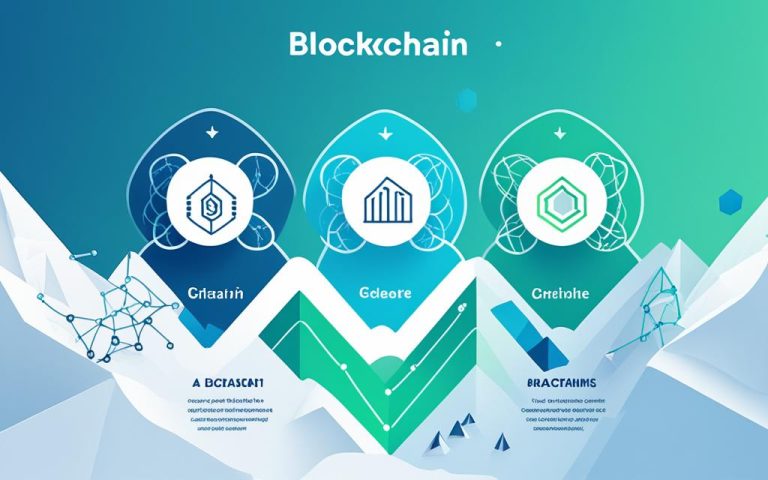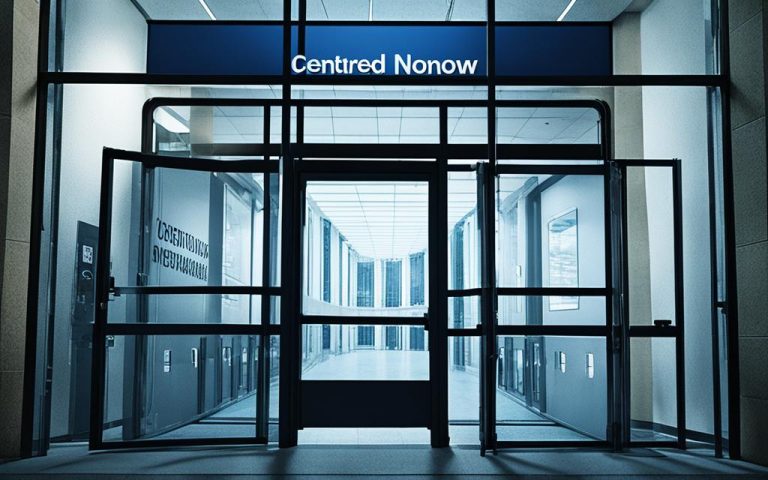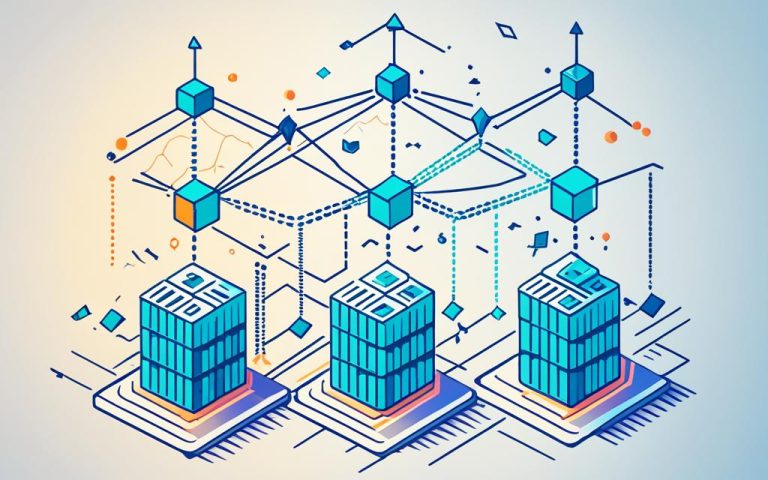Blockchain technology boosts trust, security, and transparency for data sharing in organizations. It makes tracking shared data easier. This is because all members use a shared, unchangeable record. So, there’s less need for intermediaries.
With features like encryption and distributed storage, blockchain cuts fraud risks. Mechanisms like Proof of Stake and Proof of Work keep data honest. Large blockchains, including Ethereum and Bitcoin, use these methods.
Blockchain also brings transparency by having a single, real-time database. This means everyone sees the same data, building trust. It creates a full history of exchanges between parties.
For instance, IBM uses blockchain for secure, open data sharing in its supply chains. Walmart uses it to track food origins and quality. This tech provides a clear audit trail.
Blockchain simplifies processes and cuts mistakes through smart contracts. These contracts automatically move forward once conditions are met. This leads to faster, more efficient operations.
Many sectors gain from blockchain. In supply chains, it fosters trust and streamlines operations. Financial institutions, healthcare, and governments improve data handling and security. Insurance firms cut fraud and costs with streamlined, automated processes.
Blockchain remakes data sharing by improving security, transparency, and trust. It makes operations smoother and more efficient.
Learn more about how blockchain technology helps organizations when sharing data
Discover how blockchain technology helps organizations in sharing data
How Blockchain Enhances Data Security in Organizations
Blockchain technology is changing how organizations protect their data. It offers trust and integrity that old systems can’t. With blockchain, organizations can keep their data safe, real, and unchanged.
One major benefit of blockchain is its use of encryption. It uses complex algorithms to shield data from hackers or changes. Only those with special access can see the information. This keeps the data private and secure.
Blockchain’s design also increases safety. It does not keep data in one place, which lowers the risk of hacks or failures. Instead, data is shared across many users. This makes it tough to attack the data. Methods like Proof of Stake (PoS) and Proof of Work (PoW) help check and approve the data.
The data on a blockchain doesn’t change. Once it’s saved, it’s permanent. Data links together in a secure chain. If someone tries to change the data, it sends out an alert. This keeps the data accurate and trustworthy.
Blockchain offers a clear and trackable way to secure data. Every move on the blockchain is recorded and easy to check. This helps spot and look into any odd behavior. It makes sure the data stays accurate and meets rules.41>
Blockchain gives organizations a reliable way to protect their data from harm. It combines encryption, spreading out data, making data unchangeable, and openness. This makes it a top choice for keeping data safe today.
Blockchain’s Impact on Data Transparency and Efficiency in Organizations
Blockchain technology has changed the way organizations work. It offers a safe, decentralized system that makes it easier for them to share data. This technology gives everyone in the network the same real-time information, which helps with transparency.
Data transparency is key to blockchain. It keeps a clear and unchangeable record of all activities and deals. Because blockchain works on a decentralized system, there’s no need for a middleman. This makes it easier for organizations to share and check data directly.
Blockchain spreads data across all its users, making the sharing of information quick and secure. It lets organizations share data with trusted partners smoothly. This cuts down on time, costs, and the risk of mistakes.
Blockchain also lets you track data’s journey through a record of transactions. Each transaction connects to the one before it. This helps organizations follow the data’s history. It is especially useful in supply chain and logistics for keeping things transparent and accountable.
With blockchain, organizations can share data more openly, organize it easily, and track information. This technology improves how organizations manage their data. It makes their operations more efficient and boosts productivity.
Blockchain is changing how organizations manage and share data. Its secure and open approach is reshaping industry standards. This technology is driving innovation and better data practices among organizations.
| Data Transparency Benefits | Data Efficiency Benefits |
|---|---|
|
|
Conclusion
Blockchain technology is a game-changer for organizations in sharing data. It builds trust, increases security, and makes things more clear. With features like encryption and immutability, it keeps data safe from those who shouldn’t see it.
It lets everyone on the network see the same info at the same time. This means no more separate databases. Processes get simpler and faster because everything is in one place.
Many fields like supply chain and finance can really benefit from using blockchain. It’s a smart move for any organization wanting better security and efficiency in sharing information.
FAQ
What is blockchain technology?
Blockchain technology is a way to keep data safe and share it easily. It records information across many computers. This makes the data secure and hard to change without permission.
How does blockchain enhance data security in organizations?
Blockchain makes data safe using special coding called cryptographic hashes. Every piece of data gets a unique code. This, along with other security steps, stops unwanted access and changes.
What impact does blockchain have on data transparency and efficiency in organizations?
Blockchain makes data sharing open and quick. Everyone in the network can see the data at the same time. It also makes sharing data simpler and more reliable through smart contracts.
Which industries can benefit from using blockchain technology in data sharing?
Many fields like supply chain, finance, healthcare, and government can use blockchain. It makes sharing data safer and more open. Plus, it helps things run more smoothly and builds trust.



















